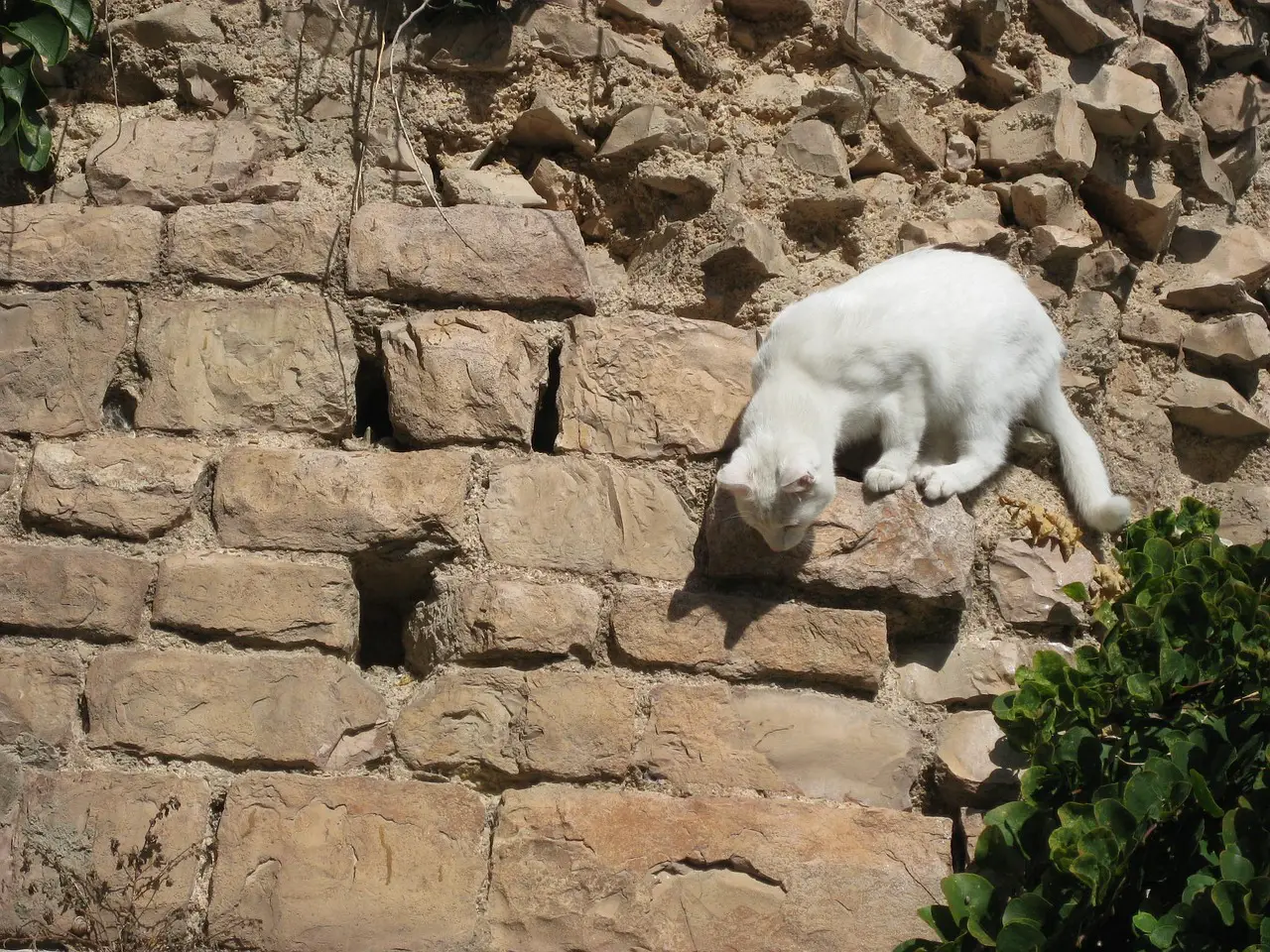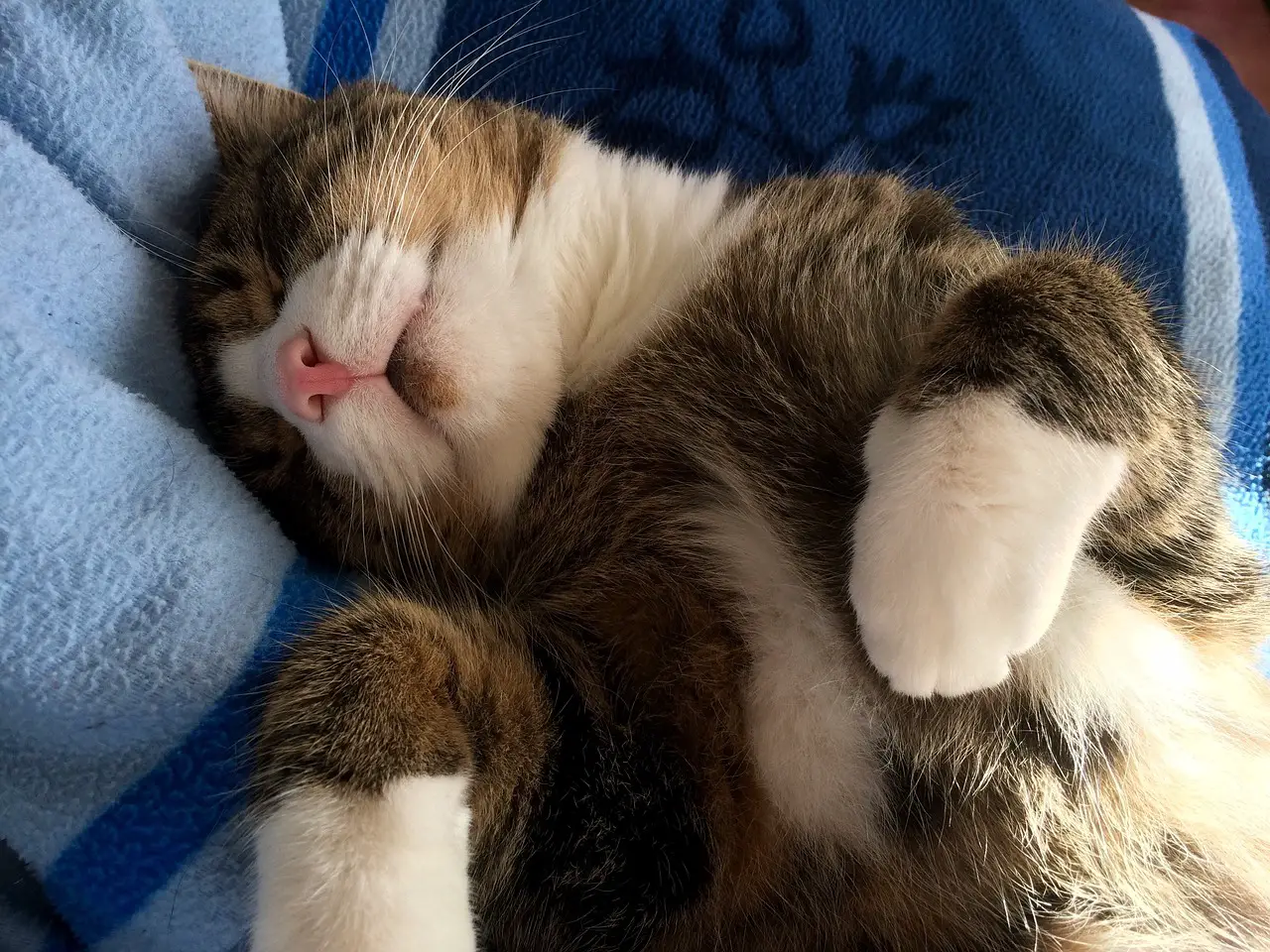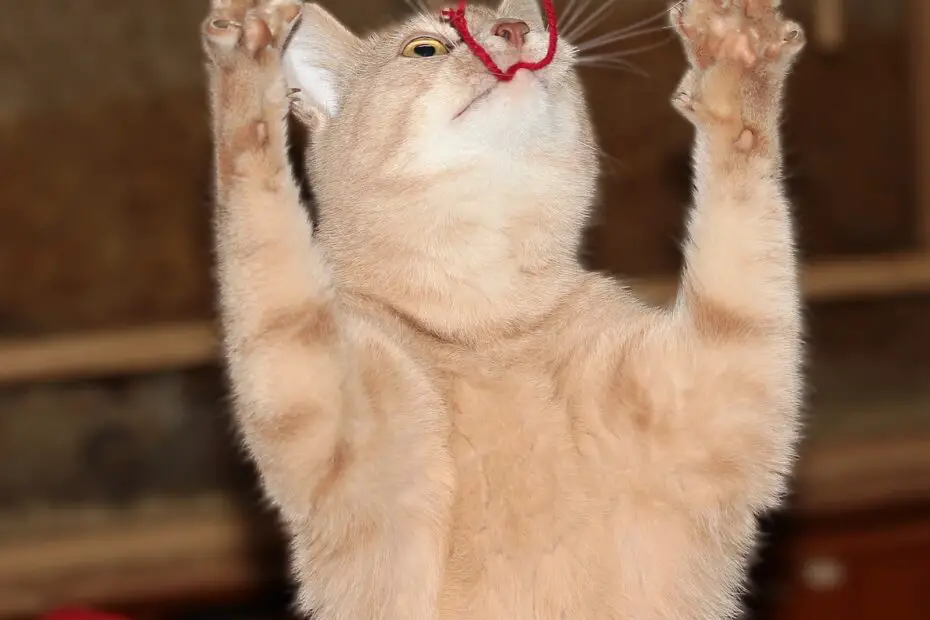Cats are known for their mysterious and often enigmatic behavior. They have fascinated and charmed humans for centuries with their independent yet affectionate nature. In this blog, we’ll delve into the intriguing world of cat behavior to help you understand your cat better, strengthen your bond, and create a harmonious relationship with your furry friend.
You may also want to know if cats can swim.
1. Cat Behavior: Body Posture
Cats are masters of non-verbal communication, and much of what they convey is through their body language. Here are some common cat postures and what they mean:

a. Tail Upright
When your cat holds its tail upright with a slight curve at the end, it’s a sign of a content and confident cat. They’re feeling friendly and approachable.
b. Tail Puffed Up
A puffed-up tail is a sign of fear, agitation, or excitement. It’s often seen when a cat encounters something new or feels threatened.
c. Tail Wrapped Around You
When your cat wraps its tail around your leg or arm, it’s a loving gesture. They’re marking you as their territory and showing affection.
d. Kneading with Paws
Kneading, where a cat pushes and pulls with its paws on a soft surface, is a comforting behavior learned from kittenhood. It signifies contentment and happiness.
e. Belly Up
While a cat’s exposed belly might look inviting, it’s not always an invitation for belly rubs. It can indicate relaxation but proceed with caution, as some cats don’t like their belly touched.
2. The Meaning of Vocalizations
Cats have a wide range of vocalizations, and each serves a different purpose:
a. Purring
Purring is often associated with contentment, but cats may also purr when in pain or anxious. It’s a way for them to self-soothe.
b. Meowing
Cats use meows to communicate with humans, not with each other. The pitch, tone, and frequency can convey various messages, from greeting you to demanding food or attention.
c. Hissing and Growling
These are defensive vocalizations that indicate fear or aggression. A hissing cat is telling you to back off, while growling signals that they feel threatened.
d. Chirping or Chattering
Some cats make chirping or chattering sounds when watching birds or prey animals through a window. It’s thought to be an expression of frustration or excitement.
3. Cat Behavior: Understanding Aggression and Playfulness
Cats have a unique way of playing, often involving stalking, pouncing, and mock hunting. Play aggression is normal, but it’s essential to distinguish it from actual aggression:
a. Playful Aggression
Playful aggression is characterized by a relaxed body posture, wagging tail, and gentle bites or swats. It’s a form of interactive play and should not be taken as a sign of real aggression.
b. Territorial Aggression
Cats are territorial animals, and they may become aggressive when they feel their space is threatened. Signs include hissing, growling, and defensive body language.
c. Fear Aggression
Fearful cats may become aggressive as a defensive mechanism. They may lash out when they feel cornered or trapped.

4. Cat Behavior: Litter Box and Territory Marking
Cats are meticulous about their litter boxes, and changes in litter box behavior can signal underlying issues:
a. Going Outside the Litter Box
If your cat starts eliminating outside the litter box, it could indicate a medical problem, stress, or dissatisfaction with the litter box’s cleanliness. Consult your vet to rule out health issues and address behavioral concerns.
b. Scratching and Territory Marking
Cats scratch to mark their territory and keep their claws healthy. Provide appropriate scratching posts and discourage destructive scratching on furniture by using deterrents or nail caps.
5. Grooming Habits and Social Bonding
Cats are meticulous groomers, and grooming serves various purposes:
a. Self-Care
Cats groom themselves to keep clean, remove loose fur, and cool down. It’s also a form of relaxation.
b. Social Bonding
Cats groom each other as a sign of affection and social bonding. When your cat grooms you, it’s a display of trust and love.
c. Excessive Grooming
Excessive grooming can be a sign of stress, anxiety, or an underlying medical condition. If your cat is grooming excessively or developing bald patches, consult your vet.
6. Solitary vs. Social Cats
Cats vary in their social preferences. Some are more independent, while others crave human companionship:
a. Solitary Cats
Some cats are naturally more independent and prefer solitude. They may enjoy occasional attention but also value their alone time.
b. Social Cats
Other cats are highly social and thrive on human interaction. They seek out companionship and can become lonely when left alone for extended periods.
7. Nighttime Activity and Sleep Patterns
Cats are crepuscular animals, meaning they are most active during dawn and dusk. It’s common for cats to be active at night, especially if they’re bored or have excess energy:
a. Providing Entertainment
To prevent nighttime restlessness, provide interactive toys and playtime during the evening to help your cat expend energy.
b. Establishing a Routine
Cats appreciate routines, so consider setting a regular bedtime and wake-up time to help regulate their sleep patterns.
8. Cat Aggression Toward Other Cats
If you have multiple cats, it’s essential to understand feline aggression dynamics:
a. Hierarchy and Dominance
Cats establish social hierarchies within multi-cat households. Some aggression can be a normal part of determining dominance.
b. Introducing New Cats
Properly introducing new cats to your household can minimize aggression. Gradual introductions and providing separate spaces for each cat can help ease the transition.
c. Territorial Aggression
Cats can become territorial and exhibit aggression toward unfamiliar cats in their territory. Ensure each cat has their space and resources to reduce tension.
9. Changes in Behavior and Stress
Cats are sensitive to changes in their environment and routines. Sudden behavioral changes can be a sign of stress:
a. Major Life Changes
Moving to a new home, the introduction of a new pet, or changes in the household can cause stress. Gradual transitions and extra attention can help alleviate anxiety.
b. Medical Issues
Behavioral changes may also indicate underlying medical problems. If your cat’s behavior shifts suddenly and dramatically, consult your vet to rule out health issues.
10. Maintaining a Positive Relationship
Understanding your cat’s behavior is key to maintaining a positive and healthy relationship:
a. Patience and Respect
Respect your cat’s boundaries and preferences. Be patient and gentle in your interactions, allowing your cat to initiate contact.
b. Enrichment and Play
Provide mental and physical stimulation through toys, playtime, and environmental enrichment to keep your cat engaged and happy.
c. Regular Veterinary Care
Schedule regular veterinary check-ups to monitor your cat’s health and address any behavioral concerns.
d. Unconditional Love
Above all, love and cherish your cat unconditionally. Your cat’s behavior is their way of communicating with you, and a loving bond is built on trust and understanding.
Conclusion: A Deeper Connection
Understanding your cat’s behavior is a journey that deepens your bond and enriches your relationship. By observing and interpreting their body language, vocalizations, and actions, you can forge a connection that transcends words. As you decode the mysteries of your feline friend, you’ll unlock the secrets to their happiness and well-being, ensuring a harmonious and fulfilling life together.
